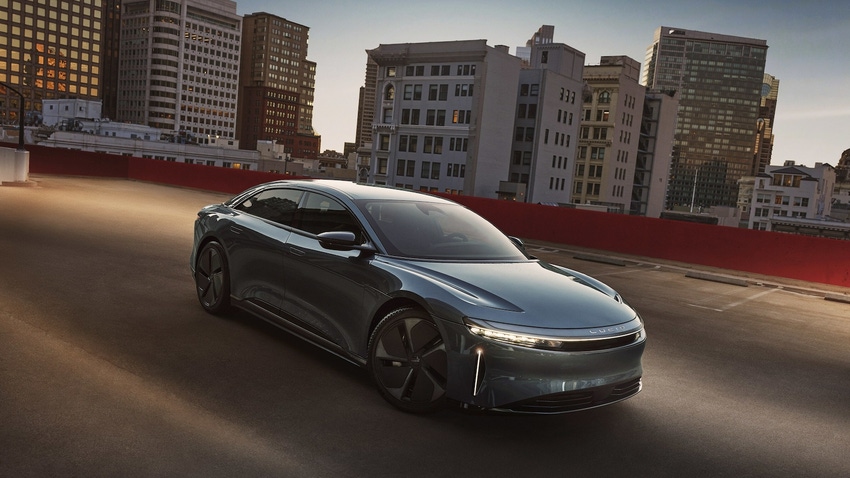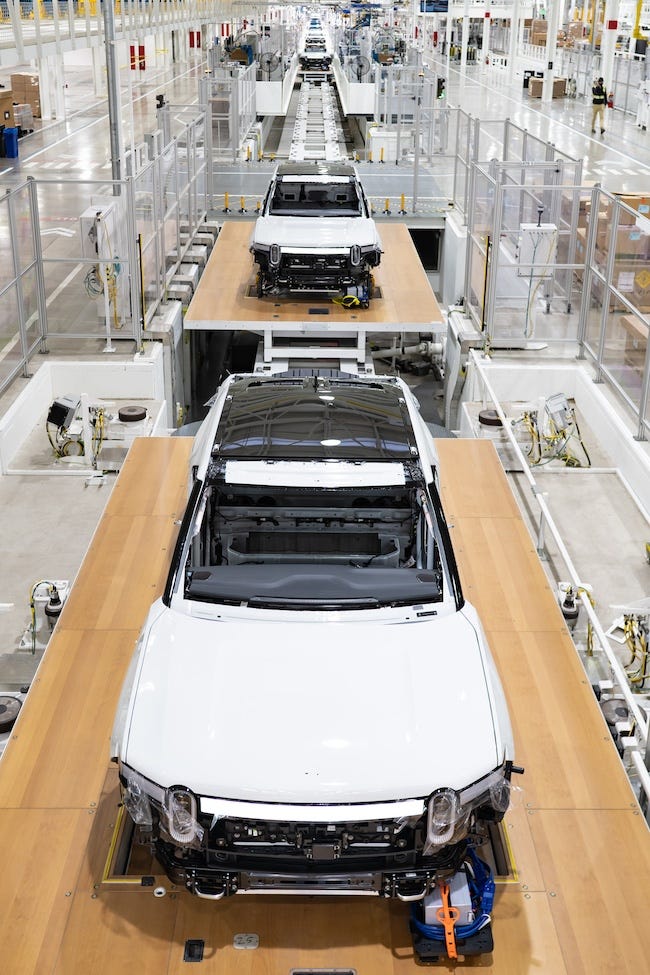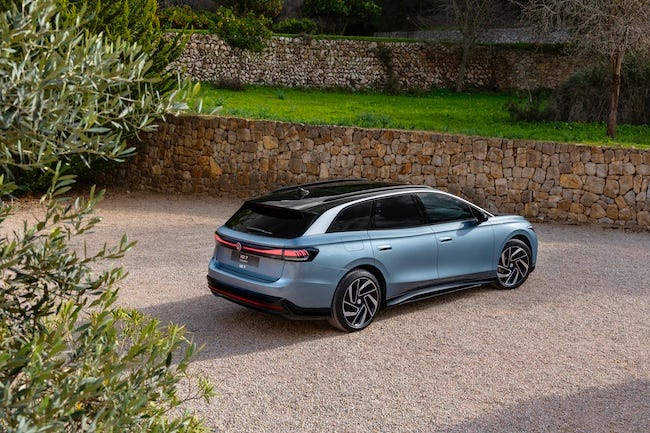Is the EV Revolution Running Out of Juice?
Heady market forecasts and automaker strategies are taking a hit as roadblocks emerge.
March 19, 2024

At a Glance
- Challenges emerge beyond traditional bugbears of affordability, range, and lack of infrastructure
- Incentivized US production will hinder affordability
- Exorbitant body repair and battery replacement costs drag down resale values
Looking back at a report from 2021 based on data from IHS Global Insights and Goldman Sachs, the forecast for electric vehicle (EV) market penetration was, to put it mildy, electrifying. By 2035, all passenger vehicles sold in the EU region were predicted to be EVs, while in the United States the forecast was a lofty 71%, with Chinese EV market penetration close to 59%. The global average for EV market penetration was estimated at an even 50%.
Fast forward three years, though, and the outlook has soured, although I can’t find any downward revisions from analysts. In fact, BloombergNEF’s "Electric Vehicle Outlook 2023" report still forecasts 60% EV market penetration by 2035.

Startup EV makers are hoping stagnating sales won’t prove to be the end of the line. Image courtesy of Rivian.
I did note that Toyota chairman Akio Toyoda, quoted in a Bloomberg report published in January 2024, expected pure EV market share to top out at 30%. Exactly when he didn’t say, but Toyoda, who’s been a long-term proponent of a mixed-fuel future — hybrids, gas engines, hydrogen, and maybe more — is adamant that internal combustion engines are here to stay.
Several factors drive EV deceleration
It’s hard to pinpoint a single factor that has caused the market mood to sour of late, and that’s because there are numerous factors behind what could be a reversal in all-electric drive train prospects beyond the oft-cited range anxiety, lack of fast-charging infrastructure, and purchase price premium over gas-powered cars. One limiting factor for EV market growth could be a shortage of lithium supply. Aggressive uptake of alternative battery chemistries, such as sodium-ion and lower-performing nickel-cobalt-manganese, coupled with rapid deployment of battery recycling infrastructure could alleviate these concerns to an extent.
Also of concern is cobalt, a key component of lithium-ion batteries, but not because it potentially will be in short supply. Most of the world’s supply of cobalt comes from China or the Democratic Republic of the Congo. Trade friction between the United States and China, particularly in light of recent US policy to restrict Chinese access to technology, could impact global supply, as could restrictions on the Congo due to child labor concerns.
Hidden EV ownership expenses
Much has been made of Tesla’s aluminum giga-casting technology for car bodies that brings significant savings in production costs but can result in equally significant repair costs if an EV is involved in a collision. Car rental major Hertz found this out the hard way, prompting an about turn on its plans to raise the proportion of EVs in its fleet. Even a relatively minor ding could mean replacing an entire front end or the entire battery, which can account for up to one-third of the retail price of the vehicle.
The battery replacement cost for a 2025 Dodge RAM 1500 REV Limited, for example, is $25,853 compared with the $81,000 total cost of the vehicle. Further, the penchant of US drivers for large vehicles is holding back sales in the United States, as they require larger, more expensive batteries. Recently, Ford said it was cutting back on F-150 Lightning light truck production in 2024, by some accounts halving weekly output from 3200 units to just 1600, as its forecasts turned out to he overly optimistic.
There are also concerns about the resale value of used EVs given the high replacement cost of the battery if it degrades prematurely. Case in point: Hertz dumped its fleet of 20,000 electric vehicles, including Teslas, at the end of 2023 and recorded $245 million in costs related to depreciation expenses. The car rental giant is going back to gas while used EV cars are depreciating faster than conventional gasoline vehicles.
EPA's electric initiative
The United States traditionally has been a light-truck-heavy market, as the vehicles were never required to meet the strict fuel efficiency requirements placed on passenger cars that were brought in after the oil shock of the 1970s. The Environmental Protection Agency (EPA), however, plans to change the rules that currently favor gas-guzzlers this year. The rule change would narrow the fuel efficiency gap between passenger cars and light trucks from 71% to 22% by 2032. This would force automakers to adopt more-efficient engines in their larger models, thereby raising the price of big cars relative to smaller ones. The EPA believes the rules are stringent enough to accelerate the shift to EVs — by 2032 they could account for two-thirds of national sales.
Low-cost Chinese EV competition
Most of the world views Chinese EV makers as having enjoyed the benefits of low-cost financing and other state assistance in boosting their global presence. China almost overtook Japan in 2023 as the world’s largest car exporter, although admittedly this was helped by a large increase in gasoline-powered car exports to Russia. Nevertheless, EVs are a big part of the mix, particularly for the cost-conscious market segment. An entry-level EV from market leader BYD sells in China for a little over $10,000 versus $32,000 for the cheapest Tesla Model 3.
For their part, the United States and Europe are considering or deploying different strategies to counter offshore competition. The European Commission is investigating Chinese battery EVs to determine whether to impose tariffs to protect EU automakers, with a decision due by November. This would further erode the attractiveness and affordability of EVs on the continent.
Are subsidies the answer?
In the United States, the Inflation Reduction Act (IRA) requires local content to reach predetermined levels in order for automakers to enjoy tax breaks, but this will almost certainly push up costs for consumers given higher production costs. In his March 7 State of the Union address, President Joe Biden noted that the CHIPS and Science Act would bring $100,000 jobs to the United States for non-college graduates. In comparison, the average Chinese autoworker takes home $7,500 annually.
Assuming generous salaries would also apply to workers at EV automakers, the cost of locally made EVs would almost certainly be higher than for imported EVs, at least before tariffs kicked in. A shift to US-based production of EVs would be certain to make them less affordable.
The United States does offer tax credits for EV purchases, but there is an income gap to qualify for the $7,500 credit. And this still doesn’t make an EV cheaper than a gas-powered car. Most EU nations also offer subsidies, but besides Romania with a €11,500 incentive, what’s on offer typically wouldn't plug the price gap.
Some countries are even withdrawing assistance for EV purchases. New Zealand stopped its Clean Car Discount scheme for EVs and hybrids at the end of 2023. The scheme was funded by higher taxes on high-emission vehicles and was dubbed the “ute tax” by the government opposition at the time, as it disproportionally affected users of diesel-powered “utility vehicles” that tend to be used by tradesmen such as builders. In an about-turn, the now-in-power center-right government will start taxing EVs and hybrids with distance-based charges from April of this year. For its part, the UK ended its EV subsidy scheme earlier, in June 2022, and delayed the ban on new diesel and petrol cars from 2030 to 2035.
What’s happening to the also rans?
As in the early days of the internal combustion engine (ICE) vehicles, today’s EV sector is highly fragmented. There are estimated to be more than 200 EV makers in China alone. Well-known brands, such as Nio, Xpeng, and Leapmotor (in which Chrysler owner Stellantis has a stake) have seen their share prices plummet as they struggle to make profits amid intense competition from industry pure-play giants BYD and Tesla, and incumbent OEMs such as Hyundai and Volkswagen.

Newcomers to the EV sector have to contend with stiff competition from deep-pocketed incumbents. Image courtesy of Volkswagen.
Many startups are also struggling to expand sales as fast as they would like. As a measure of how difficult newcomers can find the EV sector, vacuum cleaner innovator Dyson and tech giant Apple both shuttered high-profile projects to develop e-mobility solutions before they even got rolling,
So, as was the case with gas-engined cars in the early decades of the 20th century — the number of active US automakers fell from more than 250 in 1908 to 44 by 1929 and continued to fall until only the Big Three remained — the EV industry is likely to consolidate sooner rather than later, with stagnating sales hastening an industry shakeup.
Note: The author holds shares in Rivian, Nio, and the Fidelity Electric Vehicles and Future Transportation ETF.
About the Author(s)
You May Also Like



